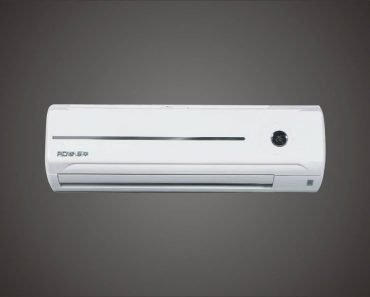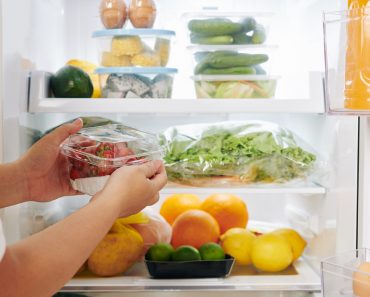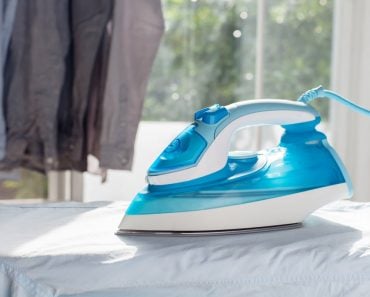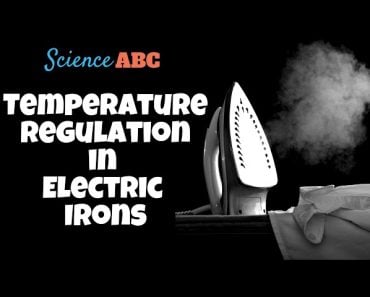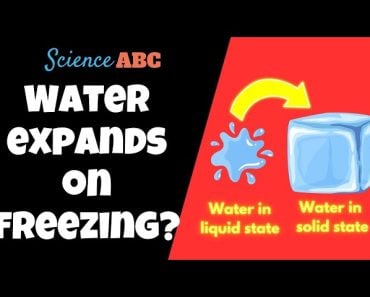Table of Contents (click to expand)
A refrigerator works by using a coolant to remove heat from the food items inside and transfer it to the surroundings. The coolant is first compressed by the compressor, which heats it up. The hot coolant is then passed through the condenser coils at the back of the fridge, where the heat is dissipated. The coolant then passes through the expansion valve, where it expands and becomes a cold gas. This cold gas is passed through the expansion coils inside the fridge, where it absorbs heat from the food items and keeps them cold.
Most people would not know what to do without a refrigerator, as there are few things that can soothe their dried-out throat as much as a glass of chilled water.

Although there were techniques people used in ancient times to provide themselves with cold water, it was certainly not as easy as opening a door at home and taking a bottle of ice-cold water. Even if they could get cold water to drink, they certainly had nothing to keep their food fresh for days or even weeks.
Fortunately, we have a little thing that does all these things for us – a fridge!
In this article we will take a look at the science of a refrigerator, in particular the different parts of a refrigerator and how they actually work together to preserve our food for longer periods of time.
Recommended Video for you:
Refrigerator Working Principle
The principle of refrigeration and cooling is very simple: it involves removing heat from one region and depositing it in another. When you pass a low-temperature liquid close to objects that you want to cool, heat from those objects is transferred to the liquid, which evaporates (and converts to gas) and takes away the heat in the process. This process involves a mechanism with refrigerant gas, heat exchanger coils, and a compressor.
You may already know that gases heat up when you compress them and cool down when they are allowed to expand. That’s why a bicycle pump feels warm when you use it to pump air into a tire, while sprayed perfume feels cold.

The tendency of gases to get hot when they are compressed and cold when they expand, along with the help of some refined devices, helps a refrigerator cool the stuff stored in it.
Parts Of A Fridge
A refrigerator consists of several key components that play a crucial role in the cooling process:
Refrigerants
Also known as coolant, it is the liquid that sustains the refrigeration cycle. Specifically engineered, this chemical can alternate between being a hot gas and a cool liquid. The refrigerant circulates within the refrigerator in a cycle of evaporation and condensation, playing a key role in lowering the air temperature inside the fridge. It extracts heat from the stored items and releases it outside the refrigerator.
In the 20th century, fluorocarbons, especially CFCs, were a common choice as refrigerants. However, they are being replaced by more environment-friendly refrigerants such as ammonia, R-290, R-600A, etc.
Evaporator
This component cools the materials stored in a refrigerator. It functions as a heat exchanger, comprising finned tubes made of materials like copper or aluminum with high thermal conductivity to optimize heat transfer. These tubes absorb heat from the air, which is then blown through a coil by a fan. Housed within the refrigerator body, this heat exchanger absorbs heat from the contents inside. Consequently, the liquid refrigerant transforms into vapor due to this absorbed heat.
Compressor
The compressor is a motor that ‘draws in’ the low-pressure refrigerant gas from the evaporator and compresses it to create a hot, high-pressure gas. Subsequently, it directs this gas to the next heat exchanger (condenser) located outside the refrigerator’s body.
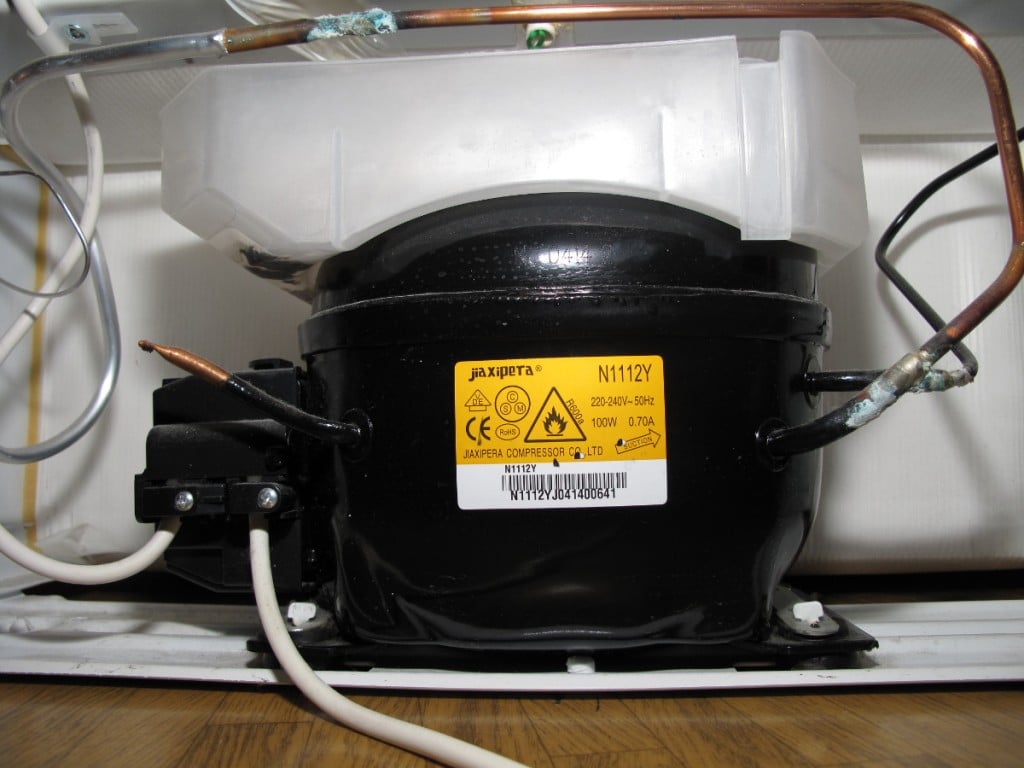
Condenser
The condenser is a heat exchanger comprised of a coiled set of tubes, typically made of copper or aluminum, with external fins. It is situated at the rear of the refrigerator. Its role is crucial in converting the gaseous refrigerant into a liquid by dissipating heat into the surrounding environment. This release of heat causes the refrigerant gas to condense into a liquid, earning this component the name ‘condenser.’
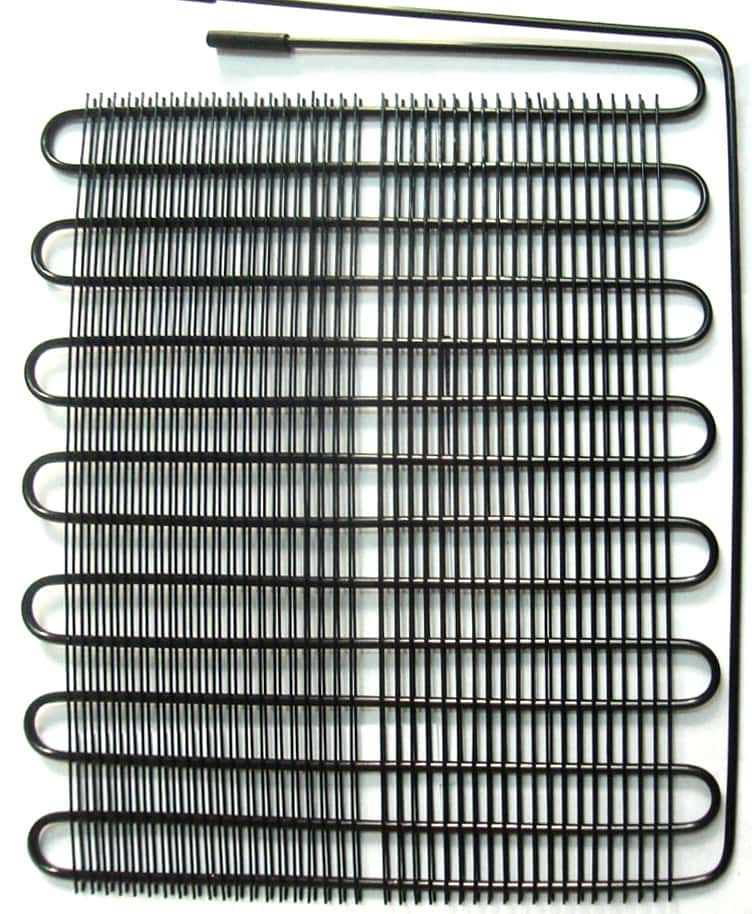
Expansion Valve
Also known as the flow control device, an expansion valve manages the flow of liquid refrigerant (commonly referred to as ‘coolant’) into the evaporator. Despite its small size, this device is highly sensitive to temperature changes in the refrigerant, regulating the quantity of refrigerant that moves toward the evaporator. The expansion valve transforms high-pressure liquid refrigerant from the condenser into low-pressure/low-temperature liquid. This low-pressure/low-temperature liquid is then directed to the evaporator, where the cycle persists.
Refrigerator Function: How Does A Refrigerator Work?
To sum up, here is a 4 step process by with a refrigerator works:
- The compressor compresses the refrigerant gas. The compressed gas heats up as it is pressurized.
- The coils on the back of the refrigerator allow the hot refrigerant gas to release its heat to the external surroundings. The refrigerant gas undergoes condensation into a liquid under high pressure.
- The high-pressure liquid flows through the expansion valve.
- The liquid immediately boils and vaporizes, its temperature dropping to about -25°F, as the cold gas flows through the evaporator coils (inside the refrigerator) it makes the inside cold by absorbing heat.
- The low pressure refrigerant gas is sucked up by the compressor, and the cycle repeats.
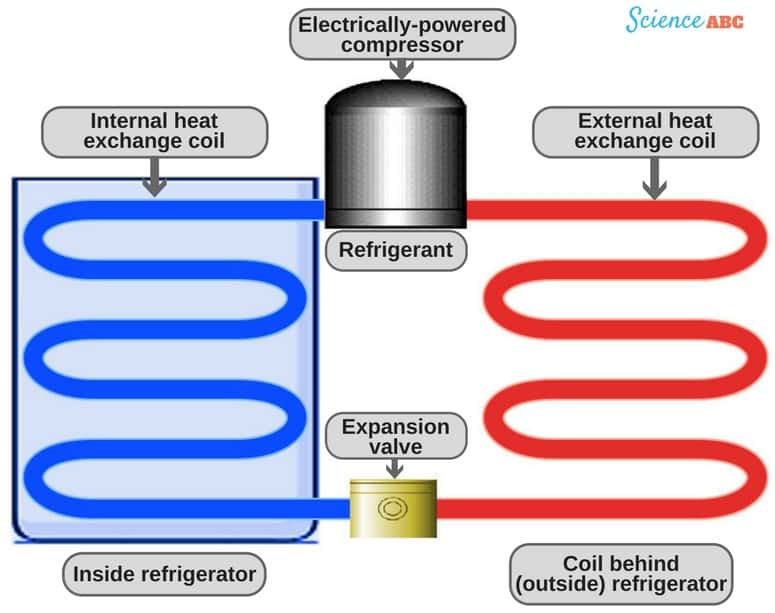
Now, let’s discuss the working of a refrigerator in more detail.
The compressor, which is a critical component of the refrigerator, compresses the refrigerant gas. As it undergoes high pressure, the gas heats up. Now, this gas transports to the condenser coils (thin radiator or condenser pipes) located at the back of the fridge, where the coils help dissipate its heat so that it becomes cool enough to condense and convert back into liquid.
Because the heat collected from the food items is given off to the surroundings via the condenser, it feels hot to the touch.
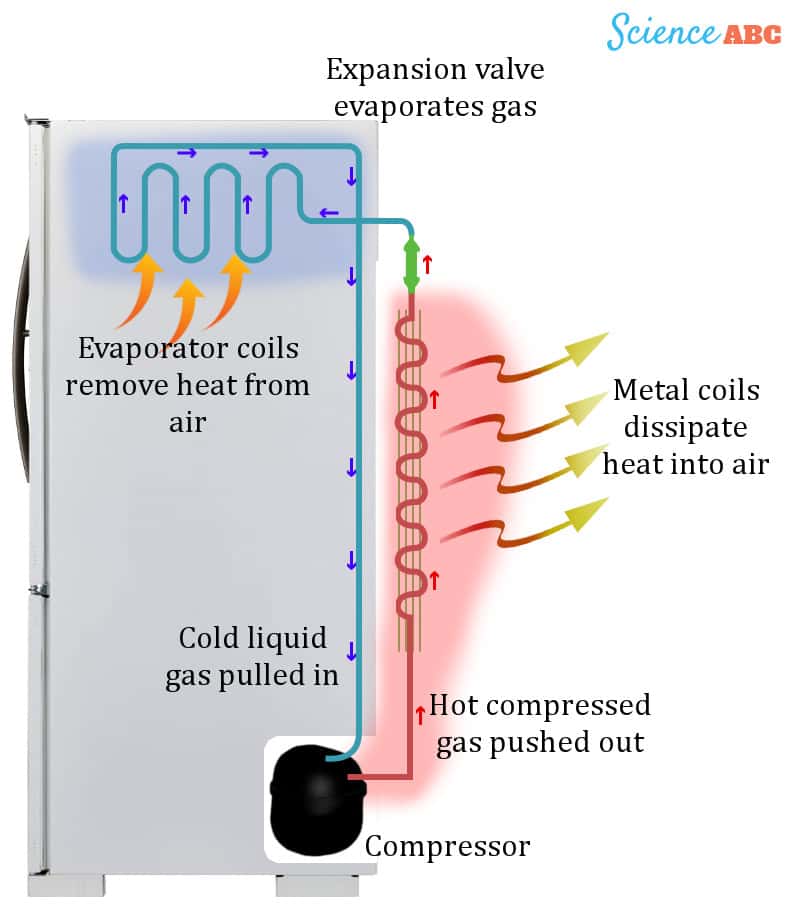
The high pressure liquid that we have now flows through the expansion valve. Think of the expansion valve as a small hole. On one side of the hole is high-pressure refrigerant liquid. On the other side of the hole is a low-pressure area (because the compressor is sucking gas out of that side).
After passing through the expansion valve, the liquid experiences a drop in the pressure. As a result, it becomes a cool (to the tune of -25°F) gas.
When this cool gas flows through the expansion coils (installed inside the fridge), it absorbs heat and therefore make the insides of the fridge cold.
This low pressure refrigerant gas is once again sucked by the compressor, and the whole cycle repeats, keeping the contents of a refrigerator perpetually cold.


